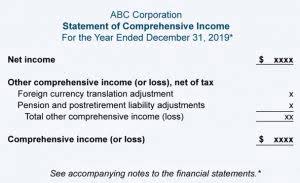
Earnings’ unpredictability and inconsistency can make budgeting for personal expenses more challenging. Unlike a fixed salary, an owner’s draw allows you to take money as needed, making it ideal for businesses with fluctuating incomes. This flexibility ensures your business is not overcommitting to a set paycheck during slow months. After that, they can withdraw extra profits (owner’s draw) that are not subject to payroll taxes. fixed assets It is important to note that owner’s draws are not deductible expenses for the business. Therefore, they reduce the business’s net income and can impact its tax liability.

➤ Plan Set Up
Even with the help of guidelines from the IRS, determining what makes sense for you can seem complicated. You don’t report an owner’s draw on your tax return, but you do report all of your business income from which you make the draw. Unlike a sole proprietorship, though, an S Corp owner can receive two types of income that are taxed differently — W2 salary and distributions. And since there are no payroll taxes being withheld, you’re also required to pay quarterly draw vs salary estimated tax payments to avoid penalties. This means managing your tax liability throughout the year rather than just at the end of the year. Some business owners try to skirt this requirement to reduce or avoid payroll taxes, but it’s risky.
- Either way, the business owner is expected to report and pay taxes on the net income of the business.
- Each scenario underscores the importance of personalized tax advice.
- Single-member LLCs are paid out and taxed by the IRS like sole proprietors, while multi-member LLCs are paid out and taxed like a partnership.
- However, to avoid withholding self-employment taxes on the whole amount, Patty could also take a portion of her compensation as a distribution.
- This figure helps you determine the baseline amount to pay yourself.
Management Accounts vs Financial Accounts: What’s Best?

Whether a salaried employee works 40 hours or 65 hours per week, he will receive the same amount of compensation. The annual salary will not change unless the employer renegotiates the payment contract by giving the employee a raise or pay cut. The benefit of a salary is the fixed, dependable income; the downside is an income that is capped at the salaried amount.

You’re our first priority.Every time.
A salary allows you to create a predictable income stream, and may make it easier to qualify for a mortgage or loan. A salary may allow you to qualify for certain tax deductions and credits. If your business is an S Corp, you must pay yourself a salary if you are actively involved in running and managing your business. For multi-member LLCs, the IRS default taxation classification is as a partnership.
Health and Other Benefits

With the legal framework in mind, now consider the financial stability of your business. A salaried arrangement might be more favorable if your enterprise exhibits consistent and reliable revenue streams. For instance, if you’re a sole proprietor, you have the option to pay yourself a salary or a consistent draw.
- Generally, sole proprietors, partners, and LLC owner/members take owner draws as their payment.
- So, make sure that you review the above section on business classifications carefully as that will reveal a lot about the best way to pay yourself as a business owner.
- C corporations face double taxation—the corporation pays taxes on its profits, and then shareholders pay taxes again on any dividends received.
- Understanding how each method works, the tax implications, and how they align with different business structures is essential for making the right choice.
- Business owners who take a salary must ensure their earnings are reasonable and justifiable based on industry standards.
- It’s important to plan for this when you take an owner’s draw to have enough money set aside to pay tax at the end of the financial year.
This includes generating payroll and a W-2 for the business owners, along with additional filing fees for the S Corp. tax return. But if you plan on working in your business indefinitely and making reasonable profits, an S corporation might be your best bet. On the other hand, C-Corp business owners don’t take draws since the company owns the business’s profits. If a C-Corp business owner wants to get paid over and above their normal salary, it must be taken as a dividend Financial Forecasting For Startups payment. A salary is a fixed amount of money that a business owner pays themselves on a regular basis (usually weekly or monthly). A salary is considered a business payroll expense, which means it is subject to payroll taxes.
